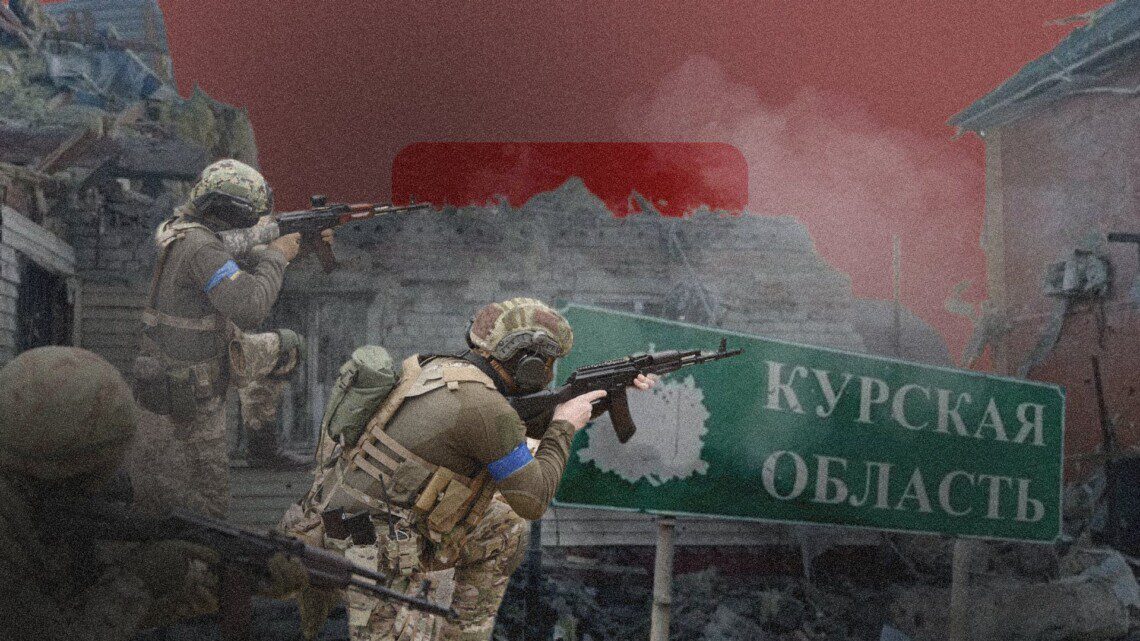The Kursk operation of the Armed Forces of Ukraine has become such a resonant phenomenon, that it has prompted the search for solutions to keep these territories under Ukrainian control.
Non-disclosure of the Kursk operation plans by the Ukrainian military command has led to the emergence of versions of the format of Ukrainian control over some previously controlled by Erephia. One of the options voiced was the creation of a buffer zone to protect the Kharkiv region region from Russian attacks and to move the positions of Russian artillery and MLRS, which will now be further away from Ukrainian soil.
The idea of creating a Kursk People’s Republic, a territory where Russian speakers would truly have freedom of speech, free elections, and democracy. And, most importantly, Russian men will be protected from rape by Kadyrov’s men, which took place during the stay of Russian troops in Kursk region.
There have even been proposals to send the Russian democratic opposition based in the West, to govern the territories liberated from the Putin regime and show the world the achievements of Russian democracy. Although, the “good Russians” themselves would be quite embarrassed by the suggestion of travelling from London to Suzhou.
The most reasonable option is the scenario of using the “Kursk card” in negotiations with the Kremlin in exchange for the occupied Ukrainian territories. However , the problem with this scenario is the Kremlin’s apparent indifference to the defence of the Kursk region and its concentration on capturing the Ukrainian Donbas. Even a dictator with common sense would put more effort into defending his own land than into seizing someone else’s, than to seize someone else’s , but we can see that Putin clearly does not care about Kursk.
We cannot rule out the scenario that Ukrainian troops will gain a foothold in Kursk and stay for a long time. There is a possibility that the Kremlin will not be willing to exchange Kursk for Zaporizhzhia or the left-bank Kherson region, and we will have to keep part of Kursk, and perhaps not only it, under our control. The indifference of Russians to their own people and the historical tendency to abandon their compatriots, which has been so often manifested throughout Russian history, may happen again.
In all three options , Ukraine needs an ideological and historical justification for military operations on the territory of the Russian Federation (which may be prolonged) both for its population and for the international community and to raise the stakes with Moscow, and the international community , and raising the stakes with Moscow. Contrary to Russian propaganda, Ukraine has sufficiently strong historical and scientific grounds for its claim to the borderlands of the aggressor country.
Contrary to Russian propaganda, which claims that ” Russia’ s borders extend to all lands where the Russian language is spoken “, Ukraine does indeed have historically legitimate grounds for part of its borderlands to belong to Ukraine, which today are under the oppression of Putin’ s dictatorship.
It is significant that the Ukrainian “special military operation” is taking place on the lands of Eastern Slobozhanshchyna, a region long inhabited by Ukrainians, now located within the Kursk, Belgorod and Voronezh regions of the Russian Federation. However, the case concerns not only resettlement , but also the official presence of certain territories under Ukrainian authority.
Since the times of Kievan Rus, Kursk, Belgorod and Voronezh regions have been part of the Chernihiv principality. The chambers of Hetman Ivan Mazepa have been preserved in the Kursk region. There are three villages in the Rylsk district: Ivanivske, Stepanivka and Mazepivka, which together form the full name of the Ukrainian hetman: Ivan Stepanovych Mazepa, who founded them. In total, two dozen villages in the Kursk region , where Ukrainians lived, are mentioned as belonging to the hetman.
Already in the twentieth century, the Law of the Ukrainian People’s Republic of 29 November 1917 proclaimed elections to the Ukrainian Constituent Assembly in the Putivl, Hraivoron and Novooskol districts of Kursk, as well as in Ostroh, Biryutsk, Valuisk and Boguchar districts of Voronezh province. To this day, the Ukrainian language has been preserved in parts of southern and western Kursk, which Russians have tried to hide by calling it a “dialect” and “Oskol dialect of Russian”
An ancient Ukrainian region under Russian occupation is Starodubshchyna , the northernmost of the Ukrainian ethnic lands, which is now part of the Bryansk region. It was in the Starodubsk region that the outstanding Ukrainian national work The Chronicle of the Samovydets was created. As early as 1663, this was the territory of the Starodubsk Cossack regiment, to which the Moscow tsars had no claim. According to the Brest Peace Treaty of 1918, all parties, including Moscow, recognised Starodub as part of the Ukrainian People’s Republic. Today, the historical Ukrainian Starodubshchyna occupies 12 districts of the Bryansk region of the Russian Federation.
Kurshchyna, Bilhorodshchyna, Starodubshchyna are only “official” Ukrainian historical lands that legitimately and legally belonged to the Hetmanate and the Ukrainian state, and Moscow and the entire international community recognised this. This does not even include the lands where Ukrainians were the majority. In particular, the Kuban, which sent three delegations in 1918 to join Ukraine on a federal basis.
In negotiations with Moscow , Ukrainians need not only to defend themselves, but also to attack, mutually using history as a weapon and expressing our own territorial claims. We need to have a historical and moral justification that “we are not occupiers who seize what is not ours, but that we are returning what is ours”. It is quite possible that when Ukrainians demand Kursk, Starodub, Belgorod and Kuban, and the Kremlin demands four Ukrainian regions, the international community will advise both sides to settle for the 1991 borders.
Author: Valeriy Maidaniuk.


Leave a Reply